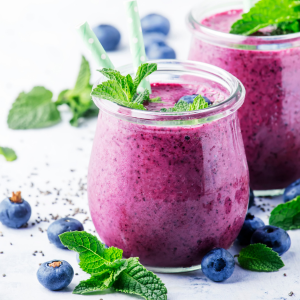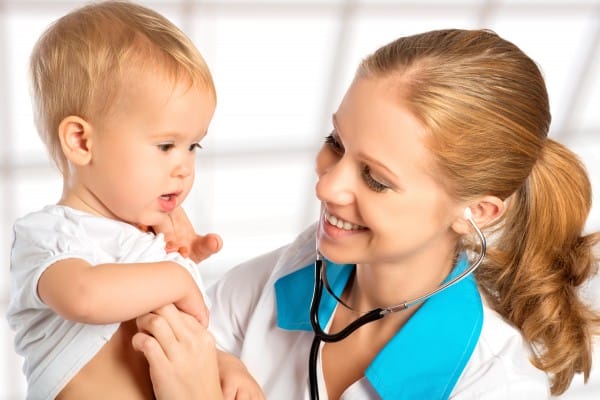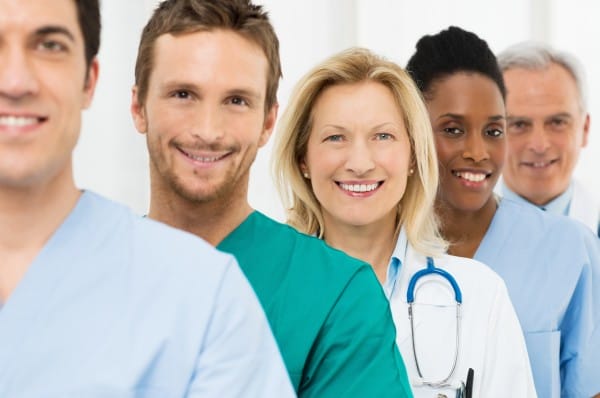There are a few myths about the effects of blending fruits and vegetables, particularly regarding its impact on dietary fiber. This article shares information on how blending affects fiber in fruits and vegetables and includes two nutrient-packed smoothie recipes perfect for spring!
What is Dietary Fiber?
Dietary fiber is a type of carbohydrate, but unlike proteins, fats, and other carbohydrates like sugars and starches, your body lacks the enzymes needed to break down fiber (1). Consequently, fiber passes through your digestive system largely intact. As it travels through the gut, it is fermented by the gut microbiota, producing short-chain fatty acids (SCFAs), such as acetate, propionate, and butyrate (1). These SCFAs are essential for supporting gut health, exerting anti-inflammatory effects, and maintaining overall wellness (1).
Fiber’s inability to be directly digested allows it to contribute to various digestive processes, including preventing constipation (2), managing cholesterol by reducing its absorption (3), and slowing the absorption of sugars, which helps control blood sugar levels (4). The Institute of Medicine (IOM) recommends 25–38 grams of fiber per day, but less than 5% of Americans meet this level. In 2017–2018, the average American consumed 8.1 grams of fiber per 1,000 calories, which is 58% of the recommended amount (5).
To learn more about healthy eating for kids, see: How To Pack A Nutritious School Lunch & Nutrient & Calorie Dense Foods That Help Underweight Kids Thrive
Does Blending Destroy Fiber?
A common concern is whether the act of blending destroys the fiber content of foods, but fiber is pretty resilient: It survives the vigorous environment of the digestive system, from chewing to stomach acid to enzyme activity, relatively unaffected. Thus, it’s unlikely that a brief encounter with the blades of a blender would “destroy” the fiber in fruits and vegetables.
So yes, while blending changes the physical structure of the fiber, much in the same way that chewing does, it does not change the total fiber content (6). Therefore, smoothies retain the beneficial fiber found in whole fruits and vegetables. This is great news for smoothie lovers!
Interestingly, blending fruits that contain seeds — like raspberries, blackberries, and passionfruit — may enhance their health benefits! Research suggests that blending these fruits can produce a lower glycemic response compared to eating them whole (7). This might be due to the fiber and other nutrients being released from the seeds during blending, which are otherwise left intact when the fruit is eaten whole.
Tips for Healthy Smoothies
Even though fiber in the fruit remains intact when blending it into a smoothie, it’s still possible for a smoothie to contain a lot of sugar and cause a significant glucose spike. We tend to consume more fruit in one sitting in a smoothie than we would if we were eating the fruit in its whole form, and sometimes we add other sweeteners like honey, juice, or dried fruit that can add significant amounts of sugar without adding additional fiber. Adding ingredients high in protein, fiber, or healthy fats can help slow digestion and stabilize blood sugar spikes.
Here are some tips to get the most out of your smoothies:
1. Add Leafy Greens & Vegetables
Vegetables are a great source of vitamins, minerals, and fiber. You can add spinach, kale, or Swiss chard for green smoothies, or include carrots and beets for a sweeter earthier flavor. These additions contribute nutrients and increase the fiber content, which aids digestion and adds bulk to your smoothies.
2. Include Nuts & Seeds
Adding nuts and seeds to your smoothies boosts the protein, healthy fat, and fiber content. Almonds, walnuts, chia seeds, flaxseeds, and hemp seeds are excellent choices. They not only thicken the texture of your smoothie but also provide essential fatty acids and help keep you full longer.
3. Choose Blackberries
Blackberries are one of the highest fiber-containing fruits, rich in both soluble and insoluble fiber. They’re also packed with vitamins and antioxidants. Including blackberries in your smoothie adds a burst of flavor, enhances the nutrient density, and significantly boosts the fiber content.
4. Add Psyllium Husk
Psyllium husk is a form of fiber made from the husks of the Plantago ovata plant’s seeds. Adding a teaspoon of psyllium husk to your smoothie can greatly increase its fiber content. Because psyllium absorbs liquid, it helps thicken your smoothie and can keep you feeling full for longer periods.
5. Mix in Supplements
I love to use smoothies to get nutrients into my kids! I will often mix supplements into smoothies for my family. Some of my favorite supplements to mix in smoothies are Beef Liver, Mighty Magnesium™, Nature’s Nutrients, and Poo Motion™ (for extra constipation support).
Kid-Approved Fiber Rich Smoothie Recipes
Smoothies are a delicious and kid-friendly way to consume more fruits and veggies!
 Dr. Green Mom’s Go Green Smoothie!
Dr. Green Mom’s Go Green Smoothie!
A fruity green smoothie packed with fiber. As tasty as it is healthy!
Ingredients
- 1 cup fresh spinach leaves
- 1/2 cup frozen pineapple chunks
- 1/2 banana
- 1/4 cup blackberries
- 1 tablespoon chia seeds
- 1 cup coconut water or other liquid of choice
Directions
- Place all ingredients in a blender.
- Blend until smooth and creamy.
- Serve immediately!
 Dr. Green Mom’s PB&J Smoothie
Dr. Green Mom’s PB&J Smoothie
Ingredients
- 1/2 cup blackberries
- 1/2 cup strawberries
- ½ banana
- 2 tablespoons walnuts or other nut of choice, roughly chopped
- 1 teaspoon psyllium husk
- 1 cup milk of choice
Directions
- Combine all ingredients in a blender.
- Blend until smooth.
- Pour into a glass and enjoy!
Summary
Many people wonder if the process of blending destroys the fiber content that is present in fruit and vegetables. While blending does alter the structure of fiber in fruits and vegetables, much in the same way that chewing does, it does not destroy it. Smoothies remain a fantastic way to consume fruits, vegetables, nuts, seeds and more, providing the body essential nutrients, including fiber.
By incorporating a variety of fibrous ingredients like leafy greens, nuts, seeds, and high-fiber fruits like blackberries, you can create delicious nutrient-dense smoothies that support digestive health, aid in blood sugar control, and contribute to overall well-being. Remember to balance your smoothies with ingredients that offer protein and healthy fats to further enhance their nutritional profile and ensure they are as satisfying as they are beneficial!
References:
- Barber, T. M., Kabisch, S., Pfeiffer, A. F. H., & Weickert, M. O. (2020). The Health Benefits of Dietary Fibre. Nutrients, 12(10), 3209. https://doi.org/10.3390/nu12103209
- Yang, J., Wang, H. P., Zhou, L., & Xu, C. F. (2012). Effect of dietary fiber on constipation: a meta analysis. World journal of gastroenterology, 18(48), 7378–7383. https://doi.org/10.3748/wjg.v18.i48.7378
- Soliman G. A. (2019). Dietary Fiber, Atherosclerosis, and Cardiovascular Disease. Nutrients, 11(5), 1155. https://doi.org/10.3390/nu11051155
- de Leeuw, J. A., Jongbloed, A. W., & Verstegen, M. W. (2004). Dietary fiber stabilizes blood glucose and insulin levels and reduces physical activity in sows (Sus scrofa). The Journal of nutrition, 134(6), 1481–1486. https://doi.org/10.1093/jn/134.6.1481
- Quagliani, D., & Felt-Gunderson, P. (2016). Closing America’s Fiber Intake Gap: Communication Strategies From a Food and Fiber Summit. American journal of lifestyle medicine, 11(1), 80–85. https://doi.org/10.1177/1559827615588079
- Derbyshire, E. (2017). Where are we with Smoothies? A Review of the Latest Guidelines, Nutritional Gaps and Evidence. Journal of Nutrition & Food Sciences, 07(05). https://doi.org/10.4172/2155-9600.1000632
- Crummett, L. T., & Grosso, R. J. (2022). Postprandial Glycemic Response to Whole Fruit versus Blended Fruit in Healthy, Young Adults. Nutrients, 14(21), 4565. https://doi.org/10.3390/nu14214565








One Comment